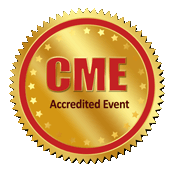
Aditi Desai
NHS Consultant Gynaecologist, UK
Title: Health economics: Cost-consequence model for an innovative device for prevention of accidentally retained surgical items (swabs)during childbirth and surgery
Biography
Biography: Aditi Desai
Abstract
Statement of the Problem: In UK, retained swabs after vaginal birth and perineal suturing are classed“Never events.1 Retained vaginal swabs have accounted for around 30% of retained foreign object -‘never events’(events that should never happen) reported annually for a number of years.2 Retained vaginal swab post-delivery could cause significant morbidity .The patient may experience serious physical and psychological complications including infection, secondary post-partum haemorrhage, sepsis, depression, lack of bonding with their baby and loss of trust in the healthcare system.3
Although it is a rare event, there has been a case report of a maternal death from it. A retained swab is a ‘Never event’.NHS improvement data (2019)-retained foreign object is the second most commonly reported never event. Vaginal swabs are the most common retained foreign object reported and the surgical swabs, the second most common.
Solution: iCount is a docking device anchoring all the swabs thereby making it impossible to leave a swab behind. It provides a seatbelt plug-in system whereby each swab tail has a plastic clip at the end which plugs into the device displaying a green indicator when all are plugged in and a red indicator when one or more are disconnected. The aim is to ensure that all swabs are returned and not retained in the patient.
Cost Consequence Analysis(CCA):
Cost consequence analysis (CCA) is an economic evaluation type which assesses a wide range of costs and consequences of the intervention. It includes all types of effects including health non-health negative and positive effects of patients and other parties giving decision-makers a comprehensive summary of the costs and effects.
Advantages: Simple broken-down (disaggregated) summary of costs and effects of the device. Includes a broader range of effects than other analyses, such as user experience and convenience of care
Disadvantage: may be less generalizable because the choice of relevant costs and effects and the weighting attached to them is often context-specific.
References
- NHS England. Never Events List 2018/2019.
- NHS Improvement. Never Events reported as occurring between 1 April 2017 and 31 March 2018 – final update. 2019.
- Mahran, M. A., Toeima, E. & Morris, E. P. (2013) The recurring problem of retained swabs and instrument . Best Practice and Research: Clinical Obstetrics and Gynaecology, 27 (4): 489-495.
- Health and Safety Executive. (2019) Frequently asked questions- what is the hierarchy of control? [Online] Available at: http://www.hse.gov.uk/risk/faq.htm#hierarchy
- NIHR article on Cost consequence analysis
Decision Problem, Model structure and pathways
Population: Women undergoing vaginal birth, Alternative population of people undergoing abdominal surgery available in the model
Intervention: iCount device system with surgical swabs/surgical tampon
Comparator: Standard care comprising of standard 5 surgical swabs
Perspective: NHS- Outcomes Costs, Economically justifiable price of the device (break-even price)
The unit costs included within the model were taken from national databases, including:
PSSRU for the costs of contact with various healthcare providers
National Schedule of NHS costs for appointments in secondary care
BNF for the costs of drugs
Litigation costs are based on data provided in response to a freedom of information request (FOI reference number 3352 NHSLA litigation claims)
This model was presented in a focus group of Obstetricians, Midwives and Nurses. The data was modified to represent some probabilities more realistically and a graph was plotted:
Limitations: this model uses many inputs which have values based on assumptions(usual with an early model). The model takes an NHS perspective and does not capture cost borne by the patients i.e. personal legal costs. It also assumes that there are no longer term impacts such as mental health disorders. Successful litigation claims may increase hospital payments to NHS resolution which have not been accounted.
Conclusion
This will help the decision maker understand how iCount compares to standard care for each individual cost and effect component by understanding the incremental differences. The CCA helps to refine economic methods, identify relevant costs and outcomes and generate hypotheses for definitive cost-effectiveness studies. It provides a broader and richer source of economic information increasingly needed by NHS decision makers. It will help to focus further health economic evaluation.

